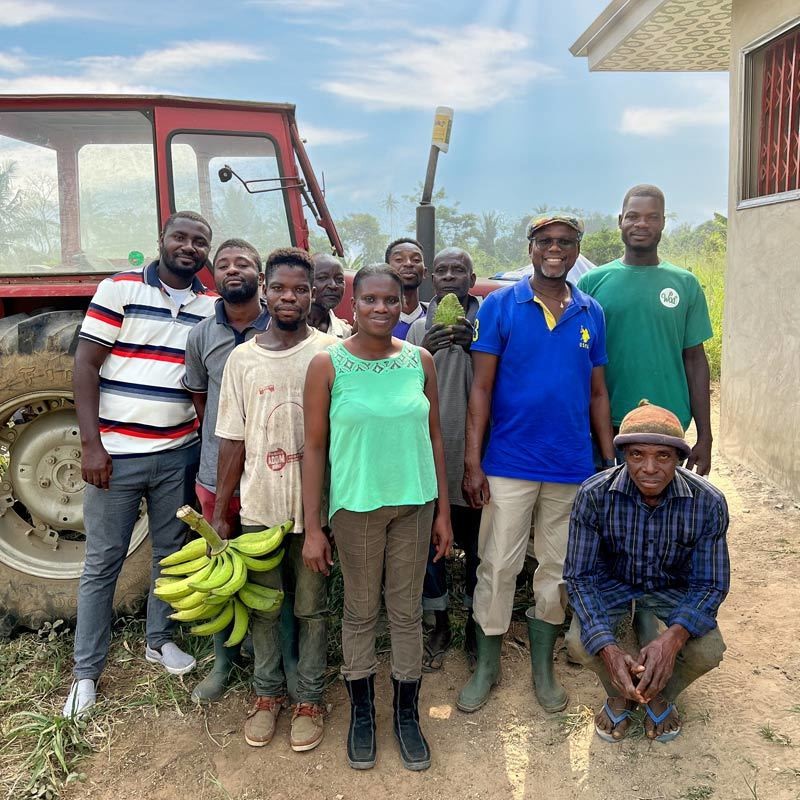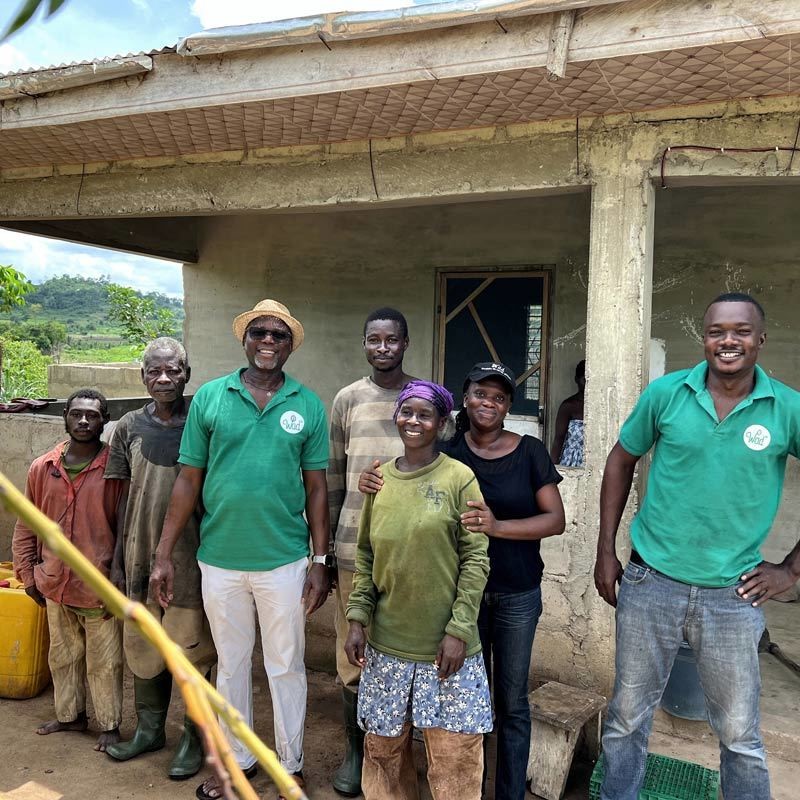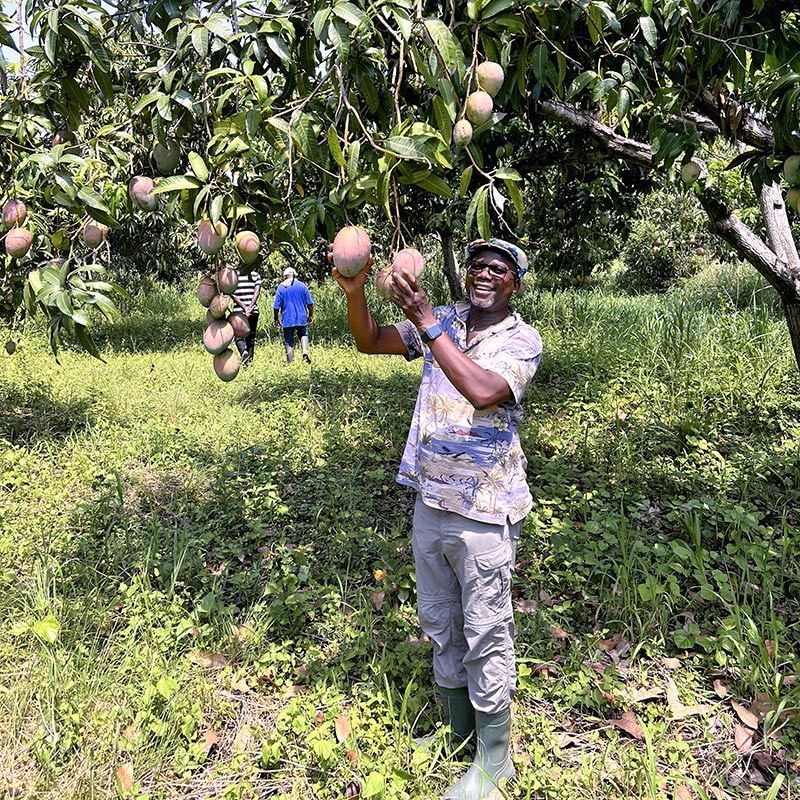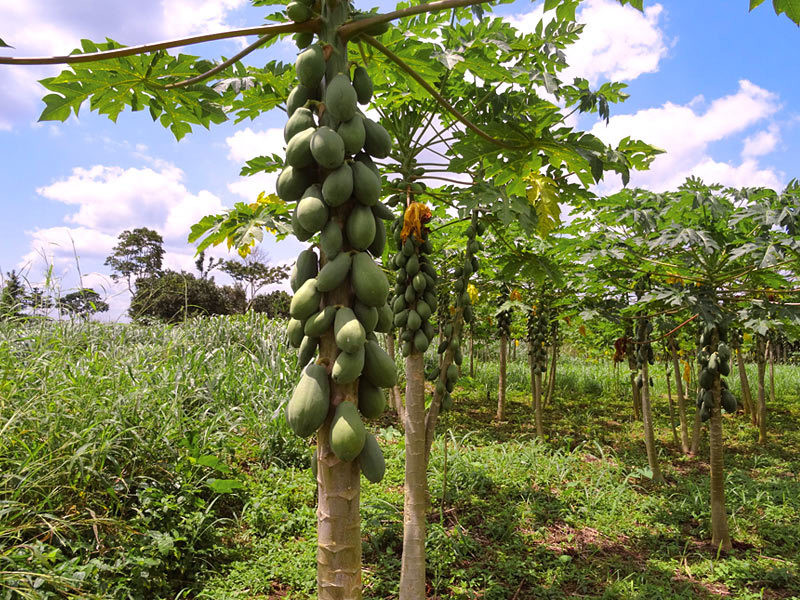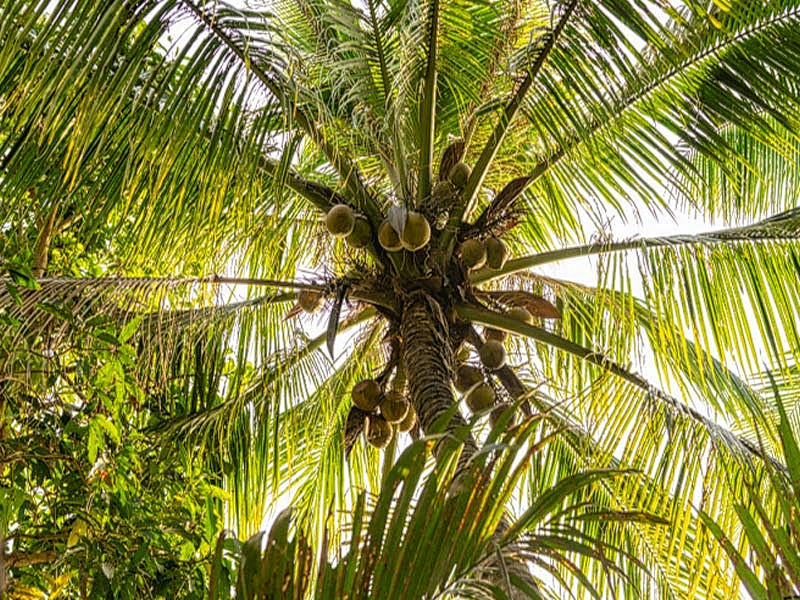Wad Farm: Somanya, Krodua, Botoku
At Wad, we're proud of our diversified operations, committed to premium production, contributing to our mission of sustainable agriculture and community empowerment.
Somanya
Wad organic farms Somanya mangoes can be found at Somanya in the eastern region of Ghana and produce mangoes for the company.
Benefiting from favourable climatic conditions and nutrient-rich soil, we grow seven distinct varieties: Keitt, Kent, Julie, Erwi, Jaffna, Ardon and Palma. Each variety has its own flavor and the mangoes are not stringy.
Harvested over two abundant seasons, from late November to February and from mid-May to July.
Krodua
A 50-acre farm using an organic mixed farming approach.
Our diverse cultivation includes pineapples, mangoes, coconuts, papaya, passion fruits, moringa, groundnuts, bananas, ginger, lemon, lime, hibiscus, soursop, and a dedicated portion for wood lots and water conservation. This farm is skilfully managed independently by dedicated farmers.
Our farm is run by 11 farmers.
Botoku
Wad has another farm situated in Botoku, which is 10 acres.
This farm focuses mainly on growing pineapples, mangoes and papayas.
This fertile land is managed by a team of 7 farmers.
Patrick’s Pineapple
Suckers from previous pineapple harvests are used to plant new ones, ensuring sustainability.
Patrick's pineapple is a Sugarloaf variety. The ripe fruit remains green and is cone-shaped. It is very sweet, soft and juicy, with white or slightly yellow flesh and a tender centre.
Certified organic
Culture - Production
Our fresh pineapples are cultivated by small-scale farmers in Ekumfi, Krodua, and Botoku.
It takes an average of one and half years for the fruit to be ready. To guarantee top-quality fruits, our pineapples are tested on the field before harvesting.
The sugarloaf pineapple remains green even when ripe. The flesh is white to slightly yellow, and the heart is tender.
Contrary to what we can think of pineapples don’t ripe after harvest. It must therefore get ripe before harvest. It’s not like banana that continues to ripe after harvest.
The yellow pineapple that we see everywhere is less fragile and travels better than the sugarloaf variety. Those varieties are smooth cayenne and MD2. It’s like a green and yellow apple, the two are different varieties and keep different colours when ripe.
Mango
Wad grows different varieties of mangoes namely Keitt, Kent, Julie, Erwi, Jaffna, Ardon and Palma, each variety has its own flavor.
Certified organic
Culture - Production
Farmers that cultivate Wad’s mangoes can be found in Somanya in the eastern region of Ghana. The soil in Somanya favours the cultivation of mangoes. The region has two seasons of mangoes per year.
Mango trees normally produce fruits after 3 – 4 years of planting.
The mango season is clearly defined. The small season starts from Middle of November to early March. The mango season is from End of May to September. However due to climatic change this period may slightly vary.
All the mango fruits on the same tree doesn’t get to maturity at the same time.
That’s why the fruits are not calibrated but selected according to their maturity and transported and when ripe.
Papaya
Wad imports Solo papayas. This slightly pungent fruit is eaten plain, like a melon, and has a sweet taste.
The seeds inside are usually removed, but they can be eaten as is as a seasoning. They have a slightly sweet peppery taste.
Certified organic
Culture - Production
The papaya farmers of Wad are found at Krodua and Botoku in the Eastern and central region of Ghana.
There are three types of papaya trees. The female, male and hermaphrodite. Only the female and hermaphrodite can produce fruits.
In less than a year after planting the papaya tree begins to yield fruits. One can harvest between 15 to 30 fruits per tree per year.
Coconut
Transported from Mepon, the fruit is picked when ripe. After being washed by hand and stripped of their seeds, they are sliced and dried. It takes around 20 kg of fresh fruit to make 1 kg of dried fruit.
Certified organic
Culture - Production
The coconut growers of Wad are not only located in Kwanyako and Gomoa Gyman, but also in Krodua.
The coconut palm is a large palm reaching 30 m in height, with pinnate leaves 4 to 6 m long and pinnae 60 to 90 cm long. The old leaves detach cleanly, leaving the trunk smooth.
Coconuts produce their first fruit between the sixth and eighth year of planting.
From the seventh to the tenth year, each tree can produce between 60 and 180 nuts.
The abundance of matured coconuts, primarily local varieties, naturally fall when matured.
The coconuts are then collected and meticulously peeled before making the journey to Weija for processing.
Some videos

